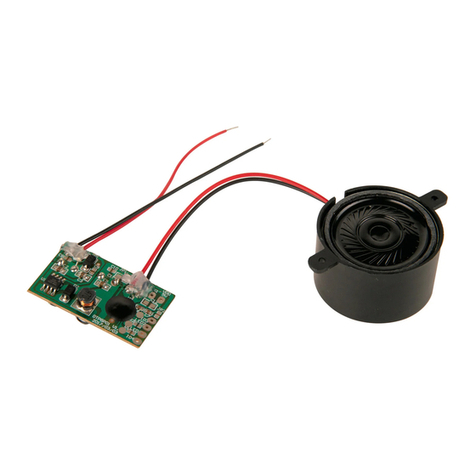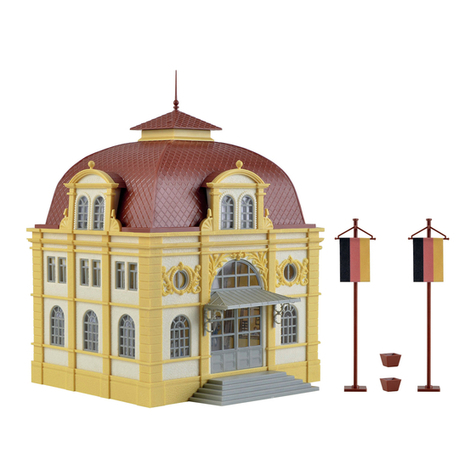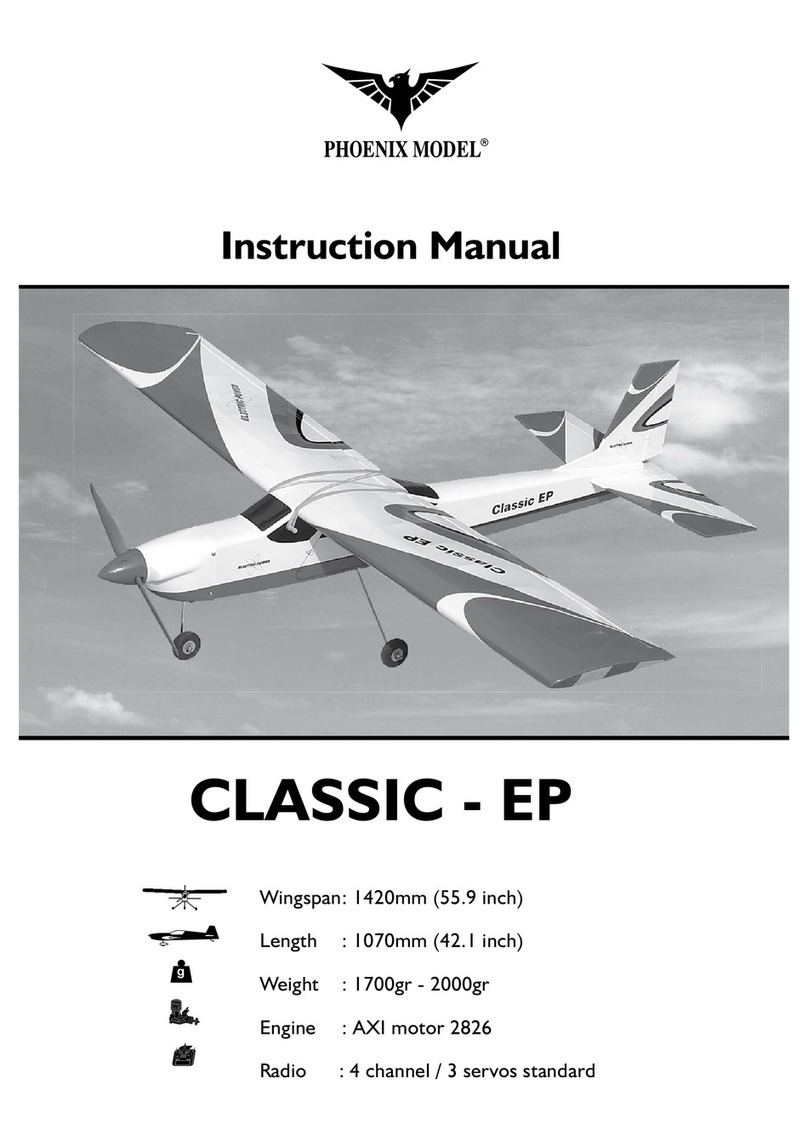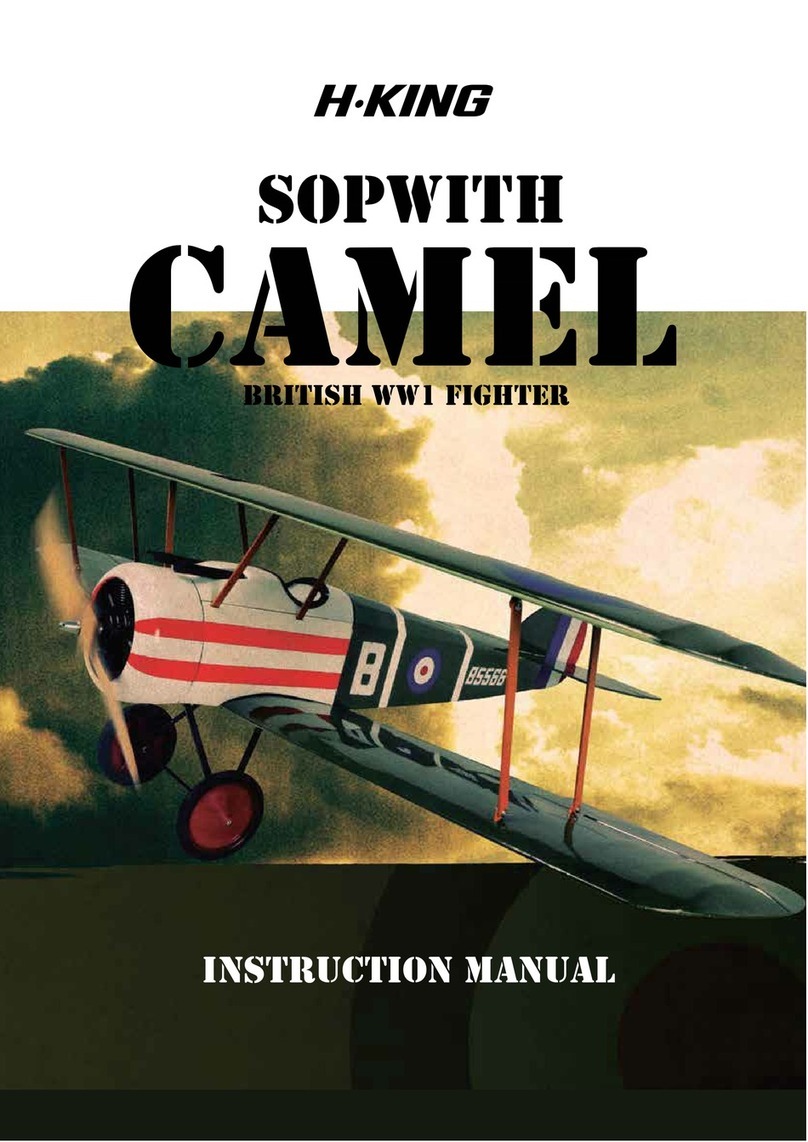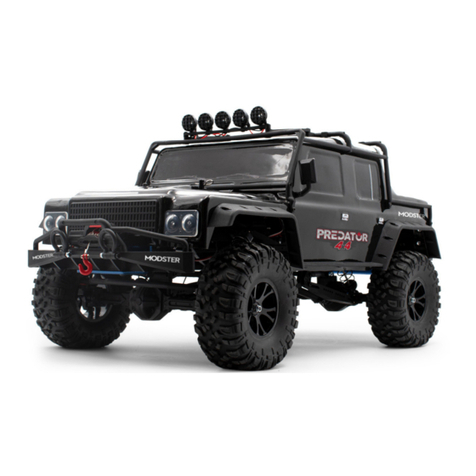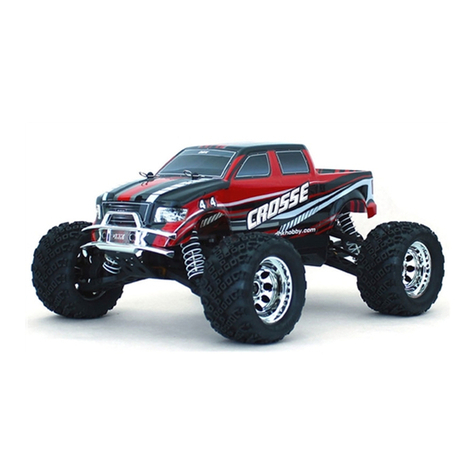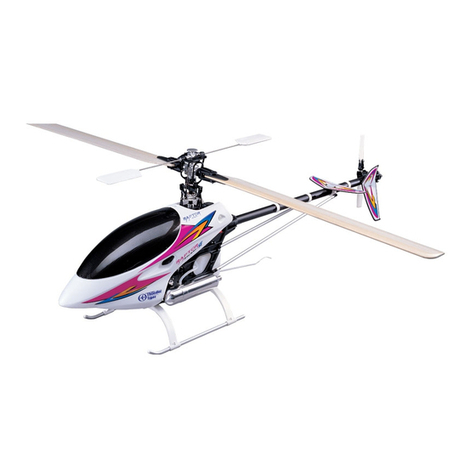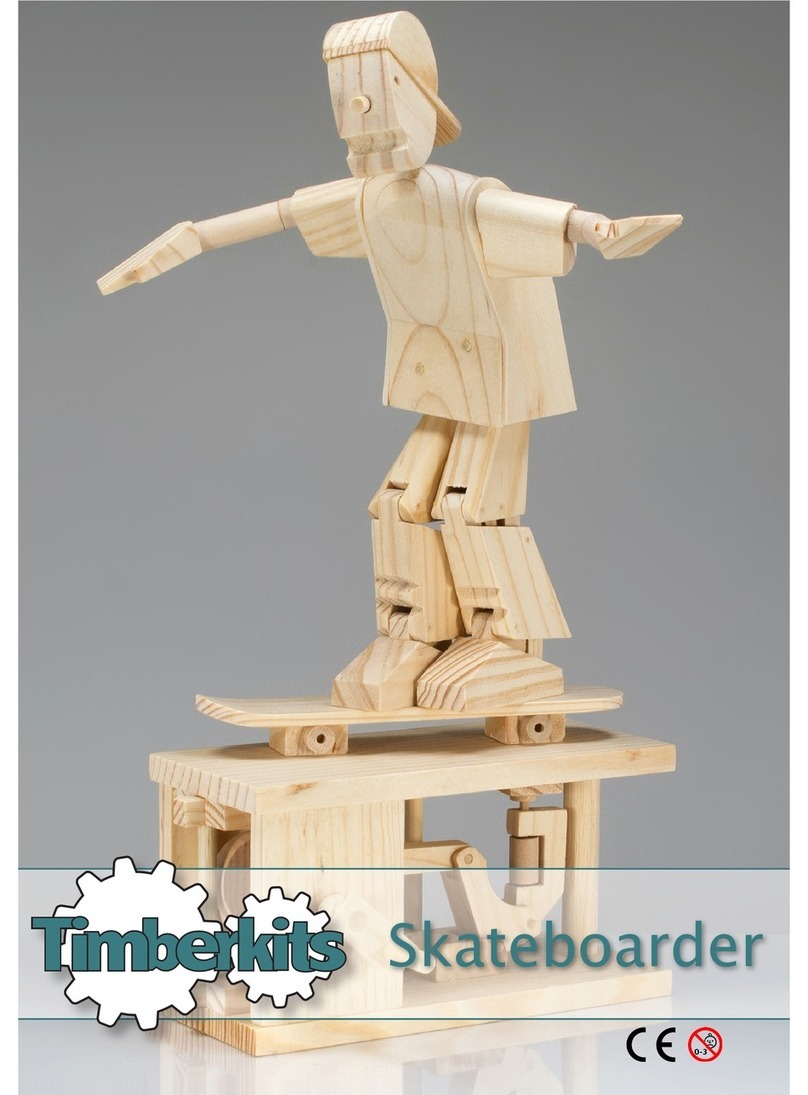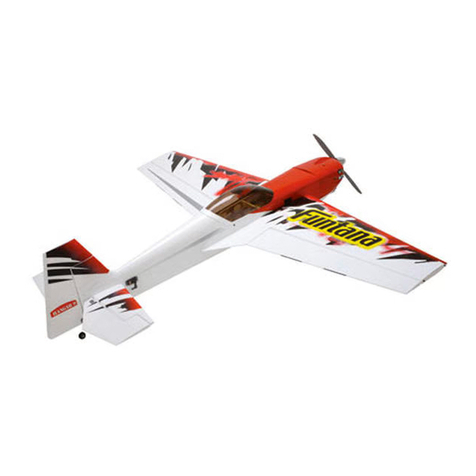Mamoli MV82 Blackbeard User manual

MV82 Blackbeard
Sc. 1:57, L. 520mm, H. 350mm
Storia leggenda e fantasia avvolgono le gesta del famigerato pirata barbanera . Edward Teach ,questo il suo vero
nome ,si guadagno la fama di terrore dei mari per le innumerevoli navi abbordate catturate e depredate in un
breve lasso di tempo:pare che le sue avventure siano durate solo venti mesi. Un personaggio cosi terrificante da
paralizzare i nemici al solo vederlo.
What we know about the exploits of Blackbeard, the ill-famed pirate, is a mix of history, legend and fiction.
Edward Teach, this should be his real name, boarded and plundered an enormous number of ships, what brought
him the fame of Terror of the Seas’, although this adventurous life of his lasted only twenty months. He was such
a terrifying personage, that his victims were paralyzed and surrendered just by seeing him.
Ce que nous savons des exploits de Barbe-Noire, pirate cruel et tristement célèbre, est un mélange d’histoire,
légende et fantaisie. Edward Teach, tel serait son vrai nom, aborda et pilla en peu de temps un nombre énorme
de bateaux, ce qui lui valut la renommée de « Terreur des Caraïbes » : il paraît que tout se conclut en un laps de
temps de vingt mois. C’était un personnage terrifiant et à sa seule vue ses victimes en restaient paralysées et ne
pouvaient que se rendre.
Was wir wissen von den Abenteuern des berüchtigten Seeräubers Schwarzbart ist ein Gemisch von Geschichte,
Sage und Fiktion. Edward Teach, so sollte sein Name gewesen sein, enterte und plünderte in sehr kurzer Zeit
enorm viele Schiffe, daher auch der Ruf „Ausgeburt des Teufels“ : scheinbar dauerte sein Abenteuer nur zwanzig
Monaten. Er war so erschreckend, dass wenn er erschien seine Opfer gelähmt blieben und nur kapitulierten
konnten.
Designer: John Gardner
MV82 Blackbeard - plan 1
AVVERTENZE GENERALI PER UN CORRETTO MONTAGGIO DEL MODELLO
ATTREZZATURA CONSIGLIATA
¦ Carta abrasiva sottile e media
- Martelletto
- Colla vinilica e istantanea
- Forblcine piccole
- Scotch di carta
- Fissachiodi
- Molletta per panni
- Spilli
- Piegalistelli
- Pinzette
- Taglia balsa
- Trapanino con punte da 0,7-1
Molti modellisti incóminciano la costruzione di un modello senza prima leggere le istruzioni. col risultato che ad un certo punto vengono a
trovarsi in difficoltà. Il più delle volte queste difficoltà nascono proprio dal fatto di non aver preso visione dell'insieme délia costruzione e
di non aver seguito attentamente il ciclo di lavorazione. Se quasi sempre è possibile superare l incaglio. puô accadere che un montaggio
non effettuato al momento glusto. comprometta tutta la costruzione. PerciO invitiamo a leggere attentamente le avvertenze generali
rlportate qui di seguito che valgono per tutti i modelli. grandi o piccoli, di nostra produzione; consi- gliamo poi di seguire scrupolosamente
il ciclo di montaggio descritto nel disegno.
La costruzione del modello è progettata secondo una progressione lógica alio scopo di ren- derne il montaggio semplice con un minimo
di attrezzatura: lima, martello. coltello. carta vetrata e trapano. Per rendere più comprensibile la tettura delle istruzioni. abbiamo evitato di
proposito l uso di termini marinari e abbiamo disegnato quasi tutte le figure in prospettiva. ben sapendo che pochissimi modellisti hanno
dimestichezza col disegno meccanico.
Ognl disegno è formato da una o più tavole grandi (A.B.C...) con le viste d insieme del modello finito e con le sezioni a grandezza naturale.
atte a fornire un orientamento generale nella costruzione. e da una serie di tavole più piccole. dedicate specificamente alla costruzione.
Ogni tavola rlporta un gruppo di operazioni da eseguire. le istruzioni per lesecuzione delle operazioni stesse e una distinta con le parti
necessarie.
La numerazione è progressiva secondo l ordine di montaggio e deve venire osservata scrupolosamente per evitare le difficoltà aile quali
si è accennato precedentemente. Raccomandiamo. prima di iniziare la costruzione. di.studiare attentamente il disegno. di individuare le
varie parti e di separare i listelli secondo le misure e il tipo di legno. La distinta annessa aile istruzioni è cosi composta: nella colonna è
indicato il numero progressive del pezzo da montare, poi una sintética descrizione dello stesso. la quantité necessaria. il tipo di materiale.
le misure ed infine il códice meccanografico del singólo elemento. La colonna "materiale'. indicata da una sigla, va interpretata nel modo
seguente:
LP
= listelli paduca (rosso)
LB
= listelli bosso (giallo)
LF
= listelli faggio (marrone-rosa)
LT
=
listelli di tiglio (bianco)
FG
= faggio
LN
-
listelli di noce
NO
= noce
LM
=
listelli di mogano
OB
= obeche (bianco sporco)
LG
=
listelli tanganica (beige-grigio)
TR
= tondini ramino (bianco sporco)
LZ
=
listelli azzurri
MET
= metallo
LV
=
listelli verdi
OTN
= ottone
LE
=
listelli neri
PL
= plástica
LA
=
listelli acero (bianchi)
CO
= corda canapa
La scatola di montaggio contiene tutti i pezzi giá lavorati pronti per il montaggio. ad eccezione di alcunl particolari. molto semplici. che
devono venire ricavati da un listello o da un tondino. come indicato sul disegno. Per I esecuzione di questi particolari. é consigliabile l uso
del tagliabalsa o di piccoli scalpelli invece della lima, come sembrerebbe logico. Gli elementi da autocostruire sono indicad con un
asterisco accanto'al numero d ordine sulla distinta. Per gli ¡ncollaggi generici delle parti in legno consigliamo di usare colla bianca vinilica:,
per l unione di parti in legno con altre in metallo. colla epossidica rapida a 2 componenti. oppure colla cianoacrilica. Per quest'ultimo tipo
di colla, segure attentamente le istruzione allégate e sce- gliere il tipo adatto: metallo o rpetallo-legno ecc. In linea di massima. il legname
contenuto nella scatola di montaggio é di diverse qualitá e conferisce al modello finito i colori che piü si avvicinano alia realtá tuttavia.
quando necessita la verniciatura. i colori e tipi di vernlce da usare sono indicati su disegno.
Ancora una volta raccomandiamo di lavorare con calma, preeislone, senza fretta e di non passare ad una lavorazione successiva se non
si é ultimata quella in corso. SOPRATTUTTO LEGGERE SEMPRE ATTENTAMENTE LE ISTRUZIONI: SI EVITERANNO INUTILI
PERDITE DI TEMPO ED ERRORI IRREPARABILI
INSTRUCTIONS GENERALES POUR UN ASSEMBLAGE CORRECT DU MODELE
EQUIPEMENT RECOMMANDE
- Papier de verre (mince et moyen)
- Petit marteau
- Repoussoir
- Pince
- Colle blanche et instantanée
- Fichoir
- Coupoir
- Ciseaux
- Epingle
- Foreuse 0,7-1
- Scotch papier
- Outil pour border
Beaucoup de modélistes commencent la construction d'un modèle sans avoir lu les instructions, avec le résultat que, à un certain point,
ils se trouvent en difficulté.
Plusieurs fois ces difficultés naissent du fait qu'ils n'ont pas une vision générale de la construction et n on pas suivi exactement les phases
de montage. S'il est presque toujours possible de surmonter la difficulté, il peut arriver qu'un montage qui n'a pas étéeffectué au moment
exact compromette toute la construction. Pour cette raison nous vous invitons à lire avec attention les instructions générales indiquées
ci-dessous qui sont valables pour tous les modèles, grands ou petits, de notre production; nous conseillons en outre de suivre scrupuleu-
sement le cycle de montage décrit dans le dessin. La construction du modèle est étudiée selon une progression logique afin de rendre le
montage simple avec peu d'outils: lime, marteau, couteau, papier de verre et perceuse. Pour rendre plus compréhensible la lecture des
instructions, nous avons évité exprès l'emploi de termes marins et avons dessiné presque toutes les figures en perspective, parce que
nous savons que peu de modélistes connaissent le dessin mécanique. Chaque dessin est formé d'une ou plusieurs tables grandes (A,B,C)
avec les vues d'ensemble du modèle fini et avec les sections grandeur nature, qui donnent une idée générale de la construction, et d'une
série de tables plus petites, dédiées en particulier à la construction. Chaque table contient un groupe d'opérations à exécuter, les
instructios pour l'exécution des opérations mêmes et une liste des parties nécessaires. La numération est progressive selon l'ordre de
montage et doit être observée scrupuleusement pour éviter les difficultés citées avant. On recomande, avant de commencer la
construction, d'étudier le dessin avec attention, d'individuer les différentes parties et de séparer les lattes selon les mesures et le type de
bojs. La liste annexée aux instructions est ainsi composée: dans la première colonne est indiqué le numéro progressif de la pièce à
monter, ensuite il y a une description synthétique de la même, la quantité nécessaire, le type de matériel, les mesures et enfin le code
suit :
LP
= lisses de paduca (rouge)
LB
= lisses de buis (jaune)
LF
= Lisses de hêtre (marron rose)
LT
= lisses de tilleul (blanc)
FG
= hêtre
LN
= lisses de noyer
NO
= noyer
LM
= lisses d'acajou
OB
= obeche
LG
= lisses de tanganyka
TR
= baguettes ramin
LZ
= lisses bleues
MET
= metal
LV
= lisses vértes
OTN
= laiton
LE
= lisses noires
PL
= plastique
LA
= lisses d'erable (blanc)
CO
= corde chanvre
a boîte de montage contient toutes les pièces déjà travaillées, prêtes pour le montage, à ¡ exception de quelques détails très simples qui
seront tirés d'une latte ou d'une baguette, comme indiqué sur le dessin. Pour I exécution de ces détails, on conseille d employer des.
coupe-balsa ou de petits ciseaux au lieu de la lime, comme il semblerait logique. Les éléments qui doivent être construits par le modéliste
sont indiqués par un astérisque à côté du numéro d ordre sur la liste. Pour les collages génériques des parties en bois, on conseille
l'emploi d une colle vinylique: pour l'union de parties de bois avec d'autres de métal on conseille de la colle blanche cyanoacrylique. Pour
ce dernier type de colle, il faut suivre avec attention les instructions annexées et choisir le type convenable: métal-métal au métal-bois
etc. En principe. le bois contenu dans la boîte de montage est de différentes qualités et donne au modèle fini les couleurs qui sont plus
semblables à la réalité.
Quand il est nécessaire de peindre le modèle, les couleurs et le type de peinture qu'il faut employer sont indiqués sur le dessin. On
recommande encore une fois de travailler avec calme, précision, sans hâte et de ne pas passer à une phase successive si le travail en
cours n'a pas été achevé. SURTOUT IL FAUT TOUJOURS LIRE AVEC ATTENTION LES INSTRUCTIONS: ON EVITERA D'INUTILES
PERTES DE TEMPS ET DES FAUTES IRREPARABLES.
GENERAL INSTRUCTIONS FOR A CORRECT ASSEMBLY OF THE MODEL
- Nail nailer
- Clothes-peg
- Pin
- Plank bender
RECOMMENDED TOOLS
- Emery paper (thin and medium)
-Tweezers
- Knife for wood
- Little drill 0,7-1
- Hammer
- White glue and instant glue
- Modeling scissors
- Paper scotch
- Nail nailer
- Clothes-peg
- Pin
- Plank bender
A lot of modellers begin the construction of a model without reading the instructions, with the result that at a certain point they find
themselves in difficulty: These difficulties are generally due to the fact that the modeller has not looked into the whole construction and
has not followed carefully the various stages of assembly. If it is nearly always possible to overcome the difficulty, it may happen that an
assembly operation, which has not been done at the right moment, compromises the whole construction. Therefore we recommend to
read attentively the following general instructions, valid for all the models, for the big ones as well as for the little ones, 'of our production;
we also recommend to follow scrupulously the different assembly stages described in the drawing. The construction of the model is studied
so as to make the assembly possible with very few tools: file, hammer, knife, sand-paper and drill. To make the reading of instructions
more comprehensible, marine terms have been avoided and we have drawn nearly all the figures in perspective, as we know that very
few modellers are familiar with the mechanical drawing. Each plan consists of one or more big tables (A,B,C.) with complete views of the
finished model and full-size sections giving a general idea of the construction. Each table contains a group of operations to be carried out
with the relative instructions and a list of the necessary parts. The numeration is progressive according to the assembly order and must
be observed scrupulously. To avoid the difficulties mentioned above, we recommend, before beginning the assembly, to study carefully
the drawing, to single out the different parts and to separate the strips according to the sizes and the type of wood. The list after the
instructions is so formed: in the first column the progressive number of the part to be assembled is indicated, then a synthetic description
of the piece, the necessary quantity, the type of material, the sizes and then the code of the part. The letters in.the column "material" have
the following meaning:
LP
= paduca laths (red)
LB
= boxwood laths (yellow)
LF
= beechwood laths (brown/pink)
LT
=
lime laths (white)
FG
= beechwood
LN
=
walnut laths
NO
= walnut
LM
=
mahogany laths
OB
= obeche
LG
=
tanganyka laths
TR
= ramin rods
LZ
=
blue laths
MET
= metal
LV
=
green laths
OTN
= brass
LE
=
black laths
PL
= plastic
LA
=
maple laths (white)
CO
= hamp rope
The kit contains worked pieces ready for assembly, with the exception of some most easy details, which must be made out of a strip or a
rod as indicated in the drawing. For the execution of these details, it is advisable to use a balsacutter or small chisels instead of a file. The
parts to be constructed by the modeller are Indicated by an asterisk near the numerical order on the list. For the generic glueing of wooden
parts we advise the modeller to use white vinyl glue: for the union of wooden parts with others in metal, epoxy glue with two components
or cyanoacrylic glue. For this latter type, follow carefully the enclosed instructions and chose the suitable type: metal with metal ore metal
with wood etc. The wood contained in the kit is of different sorts and gives the finished model the most realistic colours; anyway, when
painting is requested, the colours and the type of painting to be'used are indicated on the drawing.
We recommend once more to work quietly, accurately and without hurry and not to go over to a subsequent work if the one in course has
not been completely finished. ABOVE ALL IT IS NECESSARY TO READ CAREFULLY THE INSTRUCTIONS: UNNECESSARY LOSSES
OF TIME AND IRRETRIEVABLE MISTAKES WILL THUS BE AVOIDED.
ALLGEMEINE ANWEISUNGEN FUER
EINEN KORREKTEN BAU
BERATENE WERKZEUGE
- Glaspapier (feine und mittlere Groesse)
- Haemmerchen
- Nagelheber
- Federzange
- Vynilleim und Instantleim
- Federbauklammer
- Balsamesser
- Kleine Schere
- Stecknadel
- Drillbohrer 0,7-1
- Papierscotch
- Leistenbieger
Viele Modellbauer beginnen den Bau, ohne die Anweisungen gut zu lesen. Das verursacht viele Schwierigkeiten, die das Endergebnis
beeintraechtigen koennen. Um das zu vermeiden, sollte man die Anweisungen aufmerksam lesen, weil sie den korrekten Einbauverfahren
erlaeutern. Die folgenden Anweisungen sind fuer alle Modelle gueltig und koennen Ihre Arbeit vereinfachen.
Man braucht auch kleine und einfache Einrichtung: Feile, Hammer, Messer, Glaspapier und Bohrer. Um die Anweisungen klar zu
erlaeutern, haben wir keine Seewoerter gebraucht und fast alle Bilder wurden in Perspektive gezeichnet.
Jede Zeichnung besteht aus einer oder mehr Tafeln (A, B, C usw.) mit Ansichten des schon montierten Schiffes und mit allen Sektibnen
in natuerlicher Groesse, um eine generelle Richtlinie zu geben, und aus kleineren Tafeln, die kleinen Beschreibungen von bestimmten
Arbeiten, Anweisungen fuer die Arbeitsausfuehrung und eine Liste aller Bestandteile enthalten. Diese Tafeln sind fortlaufend numeriert.
Bevor den Bau empfehlen wir, die verschiedenen Teile zu finden, und die Leisten nach den Massen und nach dem Holztyp zu verteilen.
Die Anweisungen enthalten auch eine Liste, die die fortlaufende Nummer, eine kleine Beschreibung, die nöetige Menge, den Stofftyp und
den Buchstabenwort jedes Stueckes angibt. Das Material wird wie folgt bezeichnet:
LB = leisten aus buchsbaum (gelb)
LF = leisten aus buche (braun-heilrot)
LT = lindenleisten (weiss) FG = buche
LN = nussbaumleisten NO = nussbaum
LM = mahagonileisten OB = abachi
LG =tangajicaleisten (beige-grau) TR =raminrundstäbe
LZ = bleue leisten MET = metall
LV = grüne leisten OTN = messing
LE = schwarze leisten PL = plastik
LA = leisten aus ahorn (Weiss) CO = hanfgarn
Der Baukast enthaelt fast alle schon bearbeitete und fuer den Bau'fertige Stuecke.
Einige Teile muessen aber von dem Modellbauer selbst mit der Hilfe eines kleinen Beitels (kein Feilen) gemacht werden. Anweisungen
dafuer kann man auf die entsprechende Tafel finden. Diese Stuecke werden durch ein besonderes Zeichen gezeigt. Fuer die Klebung
der Holzteile muss man Weissvynilleim benutzen, fuer die Klebung von Holzteilen mit Metallteilen muss man dagegen Epoxy- oder
Zyanoakrilikleim benutzen. Fuer diesen letzen Leimtyp bitte aufmerksam die Anweisungen folgen. Der Baukast enthaelt verschiedene
Holzarten, die dem vollendeten Modell die genaue Farbe des Originellen geben. Wenn man aber das Modell beizen moechte, werden die
genauen Faerb.e und die richtigen Lacktypen auf dem Bild beschrieben.
Noch einmal moechten wir empfehlen, mit Ruhe and Aufmerksamkeit zu arbeiten und, der gezeigte Einbauverfahren ordentlich zu folgen.
BESONDERS MUSS MAN SEHR GUT UND AUFMERKSAM DIE ANWEISUNGEN LESEN, UM KEINE ZEIT ZU VERLIEREN UND
KEINE FEHLER ZU MACHEN.

MV82 Blackbeard - plan 2
Designer: John Gardner
1)Preparare lo scaletto fig. 1 tav. 2 per ¡I montaggio della struttura: fissare su una tavoletta spessa circa 15mm. due listelli da 4mm. di spessore, distanti tra loro 4mm., ¡n modo che vi si possa incastrare la
chiglía 14 e che essa vi rimanga in posizione rettilinea e verticale.
2)Montare SENZA INCOLLARE le ordinate 1 ...10 nei rispettivi incastri sulla chiglia 14 (fig. 2). Durante il montaggio a secco, assicurarsi che nessuna delle parti vada a forzare negll incastri: é pre-feribile che
ci sia un leggero gioco. Porre, quindi, negli incastri la coperta #16. Contrallare l’allinea-mento della struttura osservandola di flanco. La coperta deve formare una linea curva senza ondulazioni mentre, vista
di fronte, presenta una leg-gera curvatura convessa senza svergolature. Quando si é sicuri che, osservando la struttura da diverse angolazioni, tutte le linee hanno un andamento corretto, smontare
completamente e ricominciare il montaggio ¡ncollando tutte le parti dall’1 al 10, seguendo l’ordine numérico. Incollare quindi la coperta #16 (fig. 3). Davanti alia ordinata #1 incollare sulla chiglia il
riempimento di prua #11.
3)Aggiustare le ordinate di prua e i relativi appoggi 11 asportando lo spigolo anteriore delle ordinate, senza pero toccare il profilo origínale corrispondente alio spigolo posteriore fig. 4. Ripetere lo stesso
lavoro sulle ordinate di poppa: ora é lo spigolo posteriore che va asportato, tenendo presente che la parte bassa delle ordinate é smussata in maniera accentuata fig. 5. Contrallare il corretto andamento
delle linee del fasciame appoggiando un listello sullo scafo ¡n diverse posizioni. II fasciame é costituito da due strati di listello: il primo di legno teñera, spesso 1,5x4mm. II secondo strato é formato da listelli
piü stretti e sottili, di legno pregiato 0,5x4mm. Prima di venire messi in opera i listelli vanno lasciati a bagno per circa mezz’ora al fine di renderli flessibili, vengono poi montati uno per volta alternativamente
su un fianco e sull’altro della struttura, cosí da non provocare deformazioni dello scafo dovute alia tensione dei listelli man mano che si asciugano. Oltre che sulle ordinate, i listelli vanno incollati tra loro e
fermati con chiodíni piantati solo in parte, in modo da poterli togliere a fasciatura ultimata. Prima di incollare un listello contrallare, appoggiandolo sulle ordinate, che l’andamento sia regolare: puó accadere
che qualche ordinata “manchi”o sia abbondante. Nei primo caso correggere inserendo sotto il listello dei pezzetti di listello sottile, in caso contrario, ritoccare l’ordinata.
4) Primo fasciame. Incollare il primo listello 1,5x4mm. pariendo da prua e proseguendo verso poppa. II lato superiore del listello segua la linea superiore della coperta. Completare la parte interiore del
fasciame con listelli 1,5x4mm. Ora i listelli vanno rastremati verso prua a partiré dalla ordinata #4 fino alia #1. In altre parole, i listelli vanno progressivamente ridotti in larghezza fino ad avere l’estre-mitá
che appoggia contro la chiglia, non piü larga di 3mm. Infatti, pariendo dal centro dello scafo e andando verso la prua, le ordinate hanno uno sviluppo sempre minore pur dovendo conteneré lo stesso numero
di listelli, da ció la necessitá di ridurli in larghezza. Nei settore di poppa agire alio stesso modo a partiré dall’ordinata #6 fino alia #10, proseguendo fino al filo della parte posteriore della coperta. Incollare i
2 blocchetti #12 sulla chiglia appoggiati all’ordinata #10. Incollare all’estre-mitá interiore della coperta a poppa 1 listello 2x5mm. per rinforzarla. Rastremare il listello fino a 0 nella direzione verso poppa
(vedi fig. 10). Ultimato il rivestimento dello scafo ambo i lati nella parte interiore, provvedere a fissare i listelli al di sopra della linea della copertura con lo stesso procedi-mento. A poppa i 2 listelli al di sopra
della coperta visti lateralmente devono sporgere oltre la coperta stessa di quel tanto che serva a creare l’inclinazione dello specchio di poppa che segue l’inclinazione della parte posteriore della chiglia (vedi
fig.10). Creare ora lo specchio di poppa incol-lando dei listelli 1,5x4mm. al di sopra della coperta allineandoli ai listelli giá posti sulle fiancate superiori. Quando i listelli incontrano la chiglia terminano
appoggiati di piatto sulla stessa (fig. 9). Togliere tutti i chiodini e lisciare la superficie del fasciame con carta vetrata a grana grossa avvolta su un pezzo di legno piano o curvo, secondo la posizione dello
scafo da aggiustare. Se si riscontra qualche avvallamento, riempire con stucco per legno e livellare. A poppa i listelli che appoggiano sulla chiglia vanno aggiustati riducendone lo spessore fino a zero, cosí
da avere una superficie chi-glia/fasciame senza soluzione di continuitá.
5) Per il secondo fasciame usare listelli 0,5x4mm. di noce. Incollare il primo listello esattamente allineato col filo interiore della prima coperta.
Proseguiré il rivestimento incollando altri listelli fino a coprire interamente la parte interiore dello scafo alternando da ambo i lati (vedi fig.
7). Incollare l’incintone 2x3mm. di noce sopra lo scalino creato dal primo listello del secondo fasciame lungo tutto lo scafo. Proseguiré poi
con listelli 0,5x4mm. fino all'altezza del primo fasciame. Rivestire anche lo specchio di poppa. Praticare, ora, con un seghetto ambo i lati le
apertura per le bocche dei cannoni. Fare riferimento alia tavola A. Misurare la distanza tra le 5 apertura. La fessura deve essere di 8mm. (fig.
12). Asportare quindi le estremitá delle ordinate portándole a livello della coperta (fig. 11).
6) Tracciare una linea lungo la mezzaria della coperta, quindi, pariendo dalla tracciatura e procedendo verso la murata, incollare il tavolato
con listelli 0,5x4mm. di tanganica fino a rivestire completamente la coperta. II tavolato é formato da spezzoni di listello lunghi circa 70mm.
incollati sfalsati e con le coste anneri-te con una matita, al fine di metiere in risalto la linea di unione tra le tavole. Lasciare liberi i due fori
da diam. 8mm. per il fissaggio dei 2 alberi (tav. 1-3) e lo scasso di poppa per il fissaggio del timone. Rivestire le múrate interne e lo specchio
di poppa con listello 0,5x4mm. di noce (vedi fig. 13). Alia base delle múrate e sopra la coperta fissare il trincarino ricavato dal listello 2x2mm.
(fig. 7 e fig. 13). Ricavare il corrimano dal listello di noce 2x4mm. ed ¡ncollarlo sopra tutta la murata fig. 7 e fig. 12 compresa la poppa.
7) Rilevare la linea di galleggiamento dalla tav. 4. Fissate le misure a prua e a poppa, capovolgere lo scafo e appoggiarlo su due blocchetti di
legno di spessore uguale a prua e a poppa (fig. 14). Fissare rígidamente con elastici una matita su una squadretta in modo che la punta della
matita si trovi alli-neati con le tracciatura sullo scafo. Far scorrere la squadretta tutto attorno alio scafo, cosí da segna-re la linea di
galleggiamento. Isolare la parte superiore alia linea di galleggiamento con nastro adesivo non trasparente. Verniciare la parte sottostante
verde - rame Fare asciugare. Coprire ora la parte inferiora giá verniciata con nastro adesivo. Verniciare la parte superiore noce fino
all’incintone compreso.
8) Praticare centralmente suH’estremitá della coperta a poppa un foro da diam. 5mm. nei quale far pas-sare la sommitá del timone.

MV82 Blackbeard - plan 2
Designer: John Gardner
1) Préparer le support fig. 1 tab.2 pour le montage de la structure: fixer sur une tablette de 14 mm. d’épaisseur deux lattes de 4mm., à la distance de 4mm. l’une de
l’autre, de façon que la quille 14 puisse être encastrés en position rectiligne et verticale.
2) Monter, sans coller, les couples 1 ....10 dans les emboîtements respectifs sur la quille 15 (fig.2). Pendant le montage à sec, s’assurer qu’aucune des parties ne force
dans les emboîtements respectifs: il est préférable qu’il y ait un certain jeu. Contrôler l’alignement de la structure: l’observant de côté, le pont doit former une ligne
courbe sans ondulations tandis que, vu de front, il présente une légère courbure convexe, sans défauts.Quand on est sûrs que, observant la structure de différents
côtés, toutes les lignes ont une allure correcte, démonter complètement et recommencer le montage collant toutes les parties du n.1 au n.10 suivant l’ordre numérique.
Donc coller le pont #16 (fig.3). Devant la couple #1 coller sur la quille le remplissage d’avant #11.
3) Ajuster les couples de proue et les appuis relatifs 11 enlevant l’arrête postérieure des couples, sans toutefois toucher le profil original correspondant à l’arête
postérieure (fig.4). Repeter la même opération sur les couples de poupe: maintenant c’est l’arête postérieure qui doit être enlevée, tenant compte que la partie basse
des couples est arrondie d’une façon accentuée fig.5. Contrôler que les lignes du borde soient correctes appuyant une latte sur la coque en de différentes positions. Le
borde est formé de deux couchés de lattes: la première de bois tendre épais de 1,5x4mm. La deuxième formée de lattes plus étroites et subtiles, de bois précieux
0,5x4mm. Avant de les appliquer, faire tremper les lattes pendant une demi-heure afin de les rendre plus flexibles; elles doivent ensuite être montées une à la fois,
alternativement sur un flanc et l’autre de la structure, de façon à ne provoquer aucune déformation de la coque, à cause de la tension des lattes à mesure qu’elles
sèchent. Outre que sur les couples, les lattes doivent être collées entre elles-mêmes et fixées avec des petits clous plantés seulement en partie, de façon à pouvoir les
enlever lorsque le borde est achevé. Avant de coller une latte, contrôler en l’appuyant sur les couples, que sa ligne soit régulière; il peut arriver que quelque couple
soit trop étroit ou trop large.Il faudra, dans le premier cas corriger insérant sous la latte des pièces de latte subtile, au cas contraire limer le couple.
4) Premier bordé. Coller la première latte 1,5x4mm. à partir de la proue et suivant vers la poupe. La côté supérieure de la latte suive la ligne supérieure du pont.
Compléter la partie inférieure du bordé avec des lattes 1.5x4mm. Maintenant la largeur des lattes doit être réduite vers proue à partir de la couple #4 jusqu’à la #1.
Les lattes doivent être réduite progressivement jusqu’à avoir l’extrémité appuyée contre la quille, pas plus large de 3mm.. En effet, partant au centre de la coque et
allant vers la proue, les couples ont un développement toujours inférieur bien qu’ils doivent contenir la même quantité de lattes, d’ou la nécessité de les réduire en
largeur. Dans le secteur de poupe, agir au même façon à partir à couple #6 jusqu’au #10, suivant jusqu'au fil de la partie postérieure du pont.Coller les deux blocs #12
sur la quille appuyés à la couple #10. Coller à l’extrémité inférieure du pont à poupe 1 latte 2x5mm. pour la renforcer.Réduire la latte jusqu’au zéro dans la direction
vers la poupe (voir fig.10).Après avoir terminé le revêtement de la coque des deux côtés dans la partie inférieure, fixer les lattes au dessus de la ligne du pont avec le
même déroulement. A poupe les deux lattes au dessus du pont voit latéralement doivent avancer du pont même en façon de créer l’inclinaison du miroir qui suive
l’inclinaison de la partie postérieure de la quille (voir fig.10).Maintenant créer le miroir en collant des lattes 1,5x4mm. au dessus du pont en alignant aux lattes déjà
mises sur les côtés supérieures.Quand les lattes rencontrent la quille et finissent appuyées à plat sur elle (fig.9). Enlever tous les clous et niveler la surface du bordé
avec du papier de verre à gros grains enroulé sur une pièce de bois plan ou courbe, suivant la position de la coque à ajuster. Si l’on rencontre quelques enfoncements,
remplir avec du stuc pour bois et niveler. A poupe les lattes appuyées sur la quille doivent être ajustées réduisant leur épaisseur jusqu’à zéro, de façon à obtenir une
surface quille/borde sans interruption.
5) Pour le deuxième bordé employer les lattes 0,5x4mm. en noix. Coller
la première latte exactement alignée avec le fil inférieur du premier
pont.Continuer le revêtement en collant des autres lattes jusqu’à
découvrir toute la partie inférieure de la coque alternativement des deux
côtés (voir fig.7).Coller la perceinte 2x3mm en noix sur la marche crée de
la première latte du deuxième bordé au long de la coque. Puis continuer
avec des lattes 0,5x4mm. jusqu’à l’hauteur du premier bordé. Couvrir
aussi le miroir.Maintenant, faire avec une petite scie des deux côtés les
ouvertures pour les cannons. Référence tab.A Mesurer la distance entre
les 5 ouvertures.L’ouverture doit être de 8mm. (fig.12). Donc emporter
les extrémités des couples en les portant au même niveau du pont
(fig.11).
6) Tracer une ligne le long de la ligne médiane du pont, ensuite, partant
du traçage et poursuivant vers la muraille, coller le bordé avec des lattes
0,5x4mm. en tanganyka jusqu’à doubler complètement le pont. Le bordé
est formé de pièces de latte d’environ 70mm. de long, collées et décalées,
les bords noircis à l’aide d’un crayon, afin de mettre en évidence la ligne
de jonction entre les tables. Laisser libre les deux trous diam.8mm. pour
fixer les deux mâts (tab.1-3) et l’emplanture de poupe pour la fixation du
gouvernail. Découvrir les murailles intérieures et le miroir avec la latte
0,5x4mm. en noix (voir fig.13). A la base des murailles et sur le pont fixer
la fourrure tirée de la latte 2x2mm. (fig.7 et fig.13). Tirer le main courante
de la latte 2x4mm. en noix et le coller sur toute muraille fig.7 et fig.12,
aussi la poupe.
7) Remarquer la ligne de flottaison de la tab.4. Fixer les mesures à proue
et à poupe, retourner la coque et l’appuyer sur deux blocs en bois du
même épaisseur à proue et à poupe (fig.14). Fixer rigidement avec des
élastiques un crayon sur une équerre de façon que la pointe du crayon se
trouve alignée avec les traçages sur la coque. Faire glisser l’équerre tout
autour de la coque, de façon à marquer la ligne de flottaison. Isoler la
partie supérieure à la ligne de flottaison avec papier adhésif pas
transparent.Peindre la partie au dessus vert - coivre Faire sécher.
Maintenant découvrir la partie inférieure déjà vernissée avec papier
adhésif. Peindre la partie supérieure noyer jusqu’à la préceinte comprise.
8) Faire au centre sur l’extrémité du pont à poupe un trou du diam.émm.
dans lequel passer le sommet du gouvernail.
1)Prepare the stand, drawing 1, section 2, for the assembly of the structure: fix to a
15mm thick board two 4mm strips, at a distance of 4mm from each other, in order to
fit the keel #14 in a straight and upright position.
2)Fit the frame 1...10 into the respective grooves on keel no. 14 (drawing two), without
glueing them. During assembly (without glueing), make sure that none of the various
parts is forced into the respective grooves: it is advisable to have a slight play.Check
the alignment of the structure: looking at it sideways,the deck #16 must form a curved
line without being warped, while, facing it, the structure presents a slight convex,
unwarped shape.When you are sure that, looking at the structure from various sides,
all the lines have a regular continuous shape, start to disassemble the structure. Then
start the assembly again by glueing all the parts from 1 to 10 in numerical order.Then
glue deck #16 (drawing 3). Glue onto the keel the prow filling #11 in front of frame #1.
3)Adjust the bow frames and the relative supports #11, removing the fore edge of the
frames, without touching the original profile corresponding to back edge (drawing 4).
Repeat the same thing with the stern frames: now it is the back edge that must be
removed, making sure that the low part of the frames is strongly chamfered (drawing
5). Check the correct alignment of the planking lines laying a strip on the hull in various
positions. The planking consists in two layers of strips: the first of soft wood 1.5x4mm
thick, the second made of narrower and thinner strips of precious wood, size 0.5x4mm.
Before being applied the strips must be soaked in water for about half an hour. This
will make them more flexible.They must then be applied one at a time, alternating on
one side and on the other of the structure, so as to avoid any possible warping of the
hull, which may be caused by the tension of the strips while they are drying. Besides
being glued onto the frames, the strips must be glued to each other and fastened with
little nails only partially driven in, so as to take them out when the sheathing is over.
Before glueing a strip check its regular line, positioning it on the frames; should a frame
be too narrow or too large, insert some pieces of thin lath under the strip or file the
frame.
4)First planking. Glue the first 1.5x4mm strip starting from prow and going on towards
the stern. The upper side of the strip follows the upper line of the deck. Complete the
lower part of the planking with the 1.5x4mm strips. The strips must now be tapered
towards the prow starting from #4 to the #1 frame. In other words, the strips must be
progressively reduced in width so as to have the end leaning against the keel, not wider
than 3mm.In fact, starting from the middle of the hull and going towards the prow the
frames narrow down gradually though they must always contain the same quantity of
strips. It is therefore necessary to reduce their width. In the stern section do the same
starting from the sixth frame to #10, going on to the end of deck. Glue two small blocks
#12 onto the keel, placed onto frame #10.Glue to the lower end of poop deck one
2x5mm strip to reinforce it.Taper the strip to zero towards the poop (see drawing 10).
When covering the hull is finished from both lower part sides, fix the strips up the line
of deck in the same way. In the stern two strips above the deck, seen laterally, stick
out beyond the deck in order to create the correct inclination of transom, which
follows the inclination of the back keel (see drawing 10). Now make the transom by
glueing 1.5x4mm strips above the deck and aligh them to the other strips already put
onto the upper sides. The strips end up flat on the keel (drawing 9). Take off all the
nails and sand the surface of the planking with rough-grained sandpaper rolled around
a flat or curved piece of wood, according to the position of the hull to be adjusted. In
case of holes, fill them with putty and smoothen rough edges. Astern, the strips leaning
on the keel must be adjusted reducing their thickness to zero, so as to have an
uninterrupted surface planking.
5)For the second planking use walnut 0.5x4mm strips. Glue the first strip exactly aligned with the upper
edge of the first strip to the first planking. Go on with covering glueing other strips to cover the entire
lower hull from both sides (see drawing 7). Glue the 2x3mm walnut sheerstrake to the step made from
first strip of the second planking covering the entire hull. Proceed with 0.5x4mm strips up to the height
of the first planking.Cover the transom too. With a small saw cut openings for cannons from both sides.
Ref. table A: Measure the distance between 5 openings. The slit must be 8mm (drawing 12). Remove
ends of frames in order to be at the level of the deck (drawing 11).
6)Draw a center line on the deck, then, starting from that line and going on towards the prow, glue the
planking with 0.5x4mm tanganyka strips until the deck is completely sheathed.The planking consists in
pieces of strips of about 70mm length.Glue them staggered, with sides blackened with a pencil, so as
to mark the connection line between the boards. Leave two holes of 8mm for the two masts (tab. 1-3)
and the poop step for fixing of the helm. Cover the inside bulwark and the transom with walnut strips
of 0.5x4mm (see drawing 13). At the end of bulwarks and on the deck fix the stringer made from 2x2mm
strip (drawing 7 and drawing 13).Make the handrail out of 2x4mm walnut strip and glue it onto the
planking drawing 7 and drawing 12, as well as the poop.
7)Mark the water-line per table 4. Mark the dimensions of prow and poop, turn the hull upside down
and lay it on two small wooden blocks with the same thickness for prow and poop (drawing 14).Take a
pencil and tie rubber bands around it and point it to the marked lines on the hull. Let the pencil slide
around the hull so as to draw the water line. Cover the upper part of the water-line with self-adhesive
tape (non transparent type). Paint the lower portion green - copper Let it dry. Now cover the lower
part already painted, with adhesive tape. Paint the upper part and also the sheerstrake walnut.
8)In the centre on the end of the poop deck drill a hole of 5mm to let the top of helm pass through.

MV82 Blackbeard - plan 2
Designer: John Gardner
1) Wie auf Bild 1, Tafel 2 dargestellt, das Gestell für den Zusammenbau des Schiffes herstellen: auf einem ca. 15mm dicken Brett zwei 4mm dicke Leisten Im Abstand von 4mm befestigen, so daß der
Kiel #4 gerade und senkrecht eingeschoben werden kann.
2)Die Spanten 1..10. ohne Klebstoff, In die entsprechenden Einschnitte am Kiel 14 (Bild 2) einfügen. Bei dieser Trockenmontage darauf achten, daß die Teile nicht mit Druck in die Einschnitte gepaßt
werden, sondern ein leichter Spielraum vorhanden bleibt. In der Folge das Deck #16 in die Einschnitte einfügen. Die Linienführung von der Seite aus kontrollieren. Das Deck muß eine gebogene Linie
ohne Wellen bilden, während sich von vorne gesehen eine leicht konvexe, nicht verzogene Wölbung ergibt. Die Konstruktion aus verschiedenen Blickwinkeln betrachten und wenn die Linienführung
stimmt, alles noch einmal auseinandernehmen und mit dem eigentlichen Zusammenbau beginnen. Die Teile 1 bis 10 in numerischer Reihenfolge kleben. Anschließend das Deck #16 (Bild 3) kleben. Die
Bugfüllung #11 vor den Spant #1 auf den Kiel kleben.
3)Die Bugspanten und die entsprechenden Stützen #11 durch Entfernen der vorderen Kante in die richtige Form bringen, ohne jedoch das Originalprofil zu verändern, das der hinteren Kante entspricht,
Bild 4.Das selbe gilt für die Fleckspanten: hier muß die hintere Kante entfernt werden, wobei bedacht werden muß, daß der untere Teil der Spanten stark abgeschrägt ist (Bild 5). Eine Leiste in
verschiedenen Positionen auf den Rumpf legen und so die korrekte Linienführung der Beplankung überprüfen. Die Beplankung besteht aus zwei Lagen von Leisten: die erste ist aus Weichholz von
1,5x4mm Stärke. Die zweite Lage besteht aus schmaleren und dünneren 0,5x4mm Leisten aus hochwertigem Holz.Vor der Verarbeitung werden die Leisten ungefähr eine halbe Stunde ins Wasserbad
gelegt um sie biegsam zu machen. Dann werden sie abwechselnd auf der einen und auf der anderen Seite des Schiffes angeklebt, damit daß sich der Rumpf, aufgrund der Spannung die während des
Trocknens der Leisten entsteht, nicht verzieht. Die Leisten werden nicht nur auf die Spanten sondern auch untereinander geklebt. Die Fixierung erfolgt mit kleinen Stiften, die nur ein kleines Stück
eingeschlagen werden, damit sie nach dem Beplanken leicht wieder entfernt werden können. Vor dem Kleben jede Leiste auf die Spanten legen und kontrollieren ob die Linienführung stimmt: sollte ein
Spant zu schmal sein, dünne Leistenteilchen unter die Leiste legen. Zu breite Spanten etwas abfeilen.
4)Erste Beplankung. Die erste 1.5x4mm Leiste ausgehend vom Bug Richtung Heck kleben. Die obere Seite der Leiste folgt der Deckslinie. Den unteren Teil der Beplankung mit 1,5x4mm Leisten
fertigstellen. Beginnend von dem Spant #4 bis zum Spant #1, die Leisten gegen den Bug hin verjüngen, das heißt, die Breite der Leisten wird fortlaufend bis auf 3mm reduziert. Das schmale Ende geht
zum Kiel. Von der Mitte des Rumpfes inRichtung Bug werden die Spanten immer schmaler, obwohl sie die gleiche Anzahl an Leisten enthalten müssen, daher ist es notwendig ihre Breite zu verringern.
Im Heckbereich auf die selbe Weise Vorgehen. Ausgehend vom Spant #6 bis zum Spant #10 und weiter bis zum hinteren Deckende. Die zwei Blöcke #12 auf den Kiel an den Spant #10 kleben. Um das
hintere Deck zu verstärken an das untere Ende eine 2x5mm Leiste kleben, die Richtung Heck auf 0 verjüngt wird, (siehe Bild 10). Nach Beendigung der unteren. Rumpfverkleidung auf beiden Seiten, die
Leisten oberhalb der Decklinie auf die gleiche Weise befestigen.Am Heck müssen die 2 Leisten über dem Deck, seitlich gesehen, soviel über das Deck hinausstehen, um die Neigung des Heckspiegels zu
ergeben, die der Neigung des hinteren Teiles des Kiels folgt, (siehe Bild 10).Für den Heckspiegel 1.5x4mm Leisten über das Deck kleben und an die schon befestigten Leisten an den oberen Seitenwänden
anpassen. Die Leisten enden flach auf dem Kiel. (Bild 9). Alle kleinen Stifte entfernen und die Oberfläche der Beplankung glätten. Dazu verwendet man grobes Schmirgelpapier das man um ein Stück
glattes oder rundes Holz wickelt, je nach dem welcher Teil des Rumpf geschliffen werden soll. Eventuelle Vertiefungen mit Holzkitt auffüllen und ausgleichen. Am Heck die Stärke der Leisten, die zum
Kiel gehen auf 0 reduzieren. So ergibt sich eine glatte Oberfläche zwischen Kiel und Beplankung.
5)Für die zweite Beplankung 0,5x4 mm Nußholzleisten verwenden. Die erste Leiste exakt angepaßt an die untere Kante der ersten
Beplankung kleben. Die Verkleidung abwechselnd auf beiden Seiten fortsetzen bis der untere Teil des Rumpfes vollständig bedeckt ist (siehe
Bild 7). Den 2x3 mm Aufsatz aus Nußholz auf die kleine Stufe kleben, die durch die erste Leiste der zweiten Beplankung entlang des ganzen
Rumpfes entstanden ist. Mit den 0,5x4mm Leisten fortsetzen bis zur Höhe der ersten Beplankung. Auch den Heckspiegel verkleiden. Nun
mit einer Metallsäge beidseitig die Öffnungen für die Kanonenmündungen aussägen, siehe Tafel A. Den Abstand zwischen den 5 Öffnungen
abmessen. Die Öffnung muß 8mm betragen (Bild 12). Die Enden der Spanten abfeilen und ihre Höhe dem Deck angleichen. (Bild 11)
6)Eine Linie entlang der Mitte des Decks ziehen und ausgehend von dieser Linie in Richtung Bordwand die Verkleidung mit o.5x4 mm
Tanganjicaleisten durchführen, bis das Deck vollständig verkleidet ist. Die Verkleidung erfolgt mit ungefähr 70 mm langen Leistenstückchen,
die versetzt verlegt werden. Um die Nahtstellen zwischen den Leisten hervorzuheben, diese an den Seiten mit einem Bleistift schwärzen.
Zwei Aussparungen von 8mm Durchmesser für die 2 Masten (Tafel 1 -3) freilassen, sowie eine am Heck für das Ruder. Die inneren Bordwände
und den Heckspiegel mit. 0,5 x 4 mm Nußholzleisten verkleiden (siehe Bild 13). An der Basis der Bordwände und über dem Deck den
Längsbalken anbringen, der aus der 2x2mm Leiste herausgearbeitet wird (Bild 7 und 13). Aus der 2x4mm Nußholzleiste den Handlauf
herausarbeiten und über die ganze Bordwand, einschließlich Heck kleben (Bild 7 und Bild 12).
7)Mit Hilfe der Tafel 4 die Wasserlinie feststellen: Die Maße am Heck und am Bug einzeichnen, den Rumpf umdrehen und auf zwei gleich
hohe Holzblöcke legen (Bild 14). Einen Bleistift mit Gummibändern auf einem kleinen Winkel so fixieren, daß seine Spitze auf die Linien am
Rumpf ausgerichtet ist. Nun den Bleistift um den Rumpf laufen lassen, um so die Wasserlinie zu erhalten.Den Teil oberhalb der Wasserlinie
mit einem undurchsichtigen Klebeband abdecken. Den untern Teil grün - kupfer lackieren und trocknen lassen. Nun den unteren, schon
lackierten Teil, mit Klebeband bedecken und den oberen Teil, bis einschließlich Aufsatz, nuss lackieren.
8) In die Mitte des Achterdecks ein Loch von 5mm Durchmesser für den Ruderschaft bohren.

MV82 Blackbeard - plan 3
Designer: John Gardner
Other Mamoli Toy manuals
Popular Toy manuals by other brands
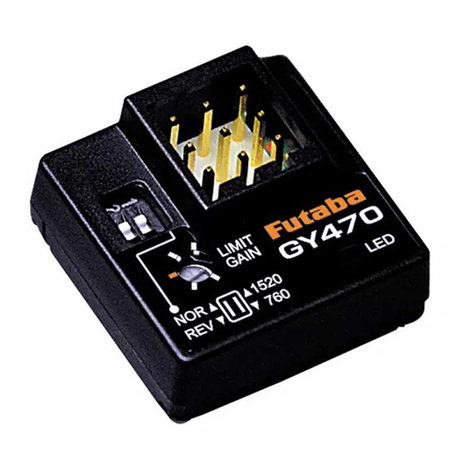
FUTABA
FUTABA GY470 instruction manual
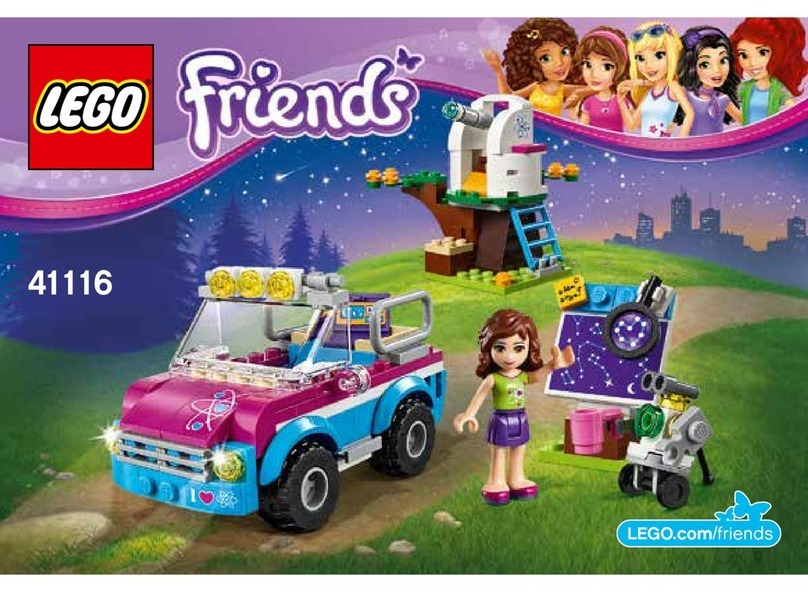
LEGO
LEGO 41116 manual

Fisher-Price
Fisher-Price ColorMe Flowerz Bouquet Maker P9692 instruction sheet
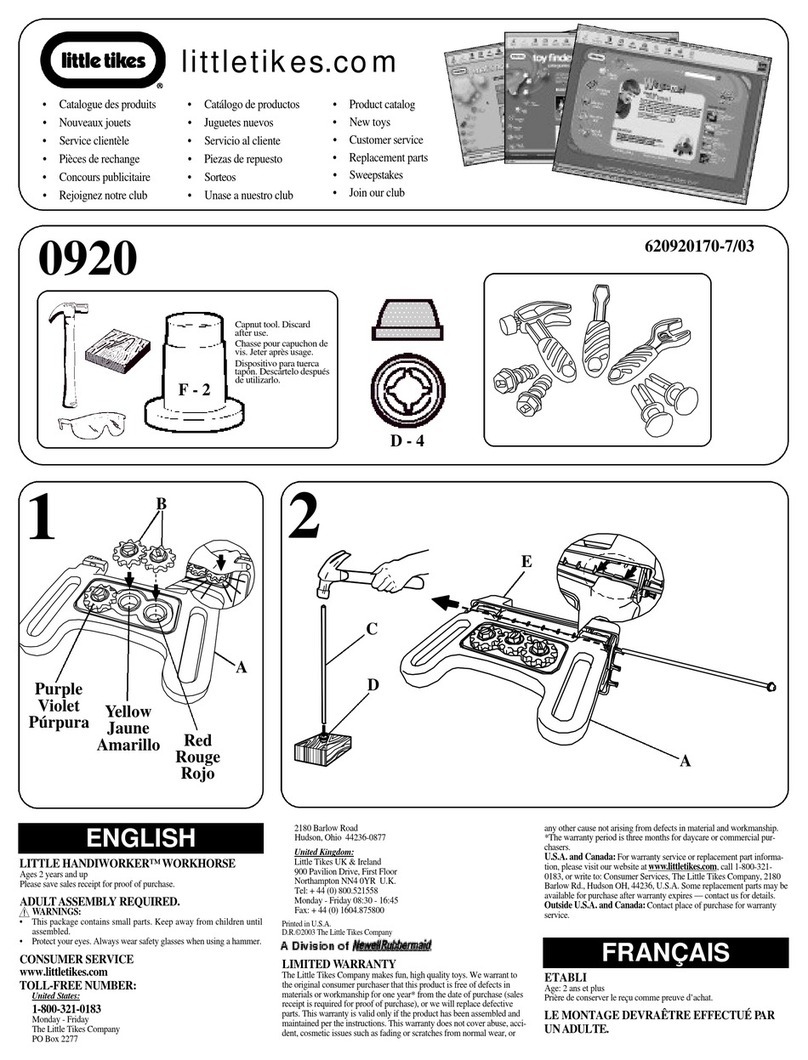
Little Tikes
Little Tikes LITTLE HANDIWORKER 0920 Assembly instructions

Eduard
Eduard EF-2000 Two-seater exterior Assembly instructions
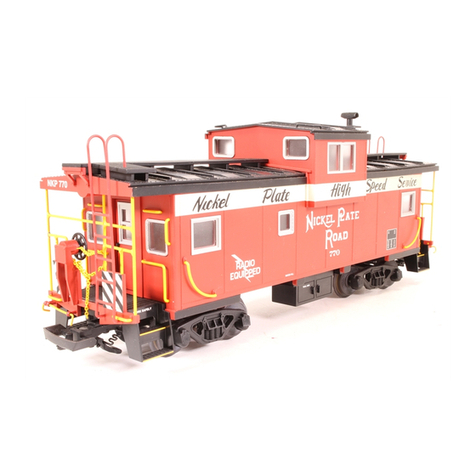
USA Trains
USA Trains EXTENDED VISION CABOOSE instructions


